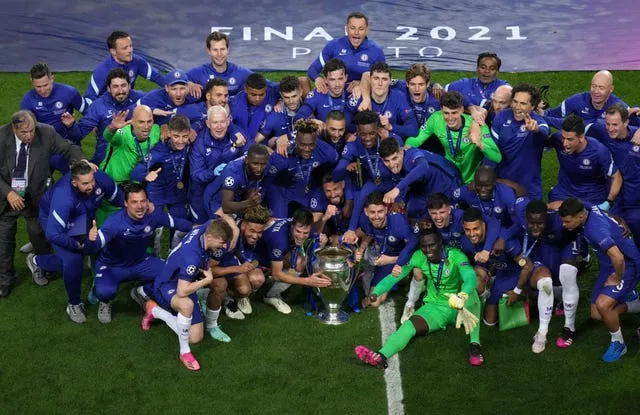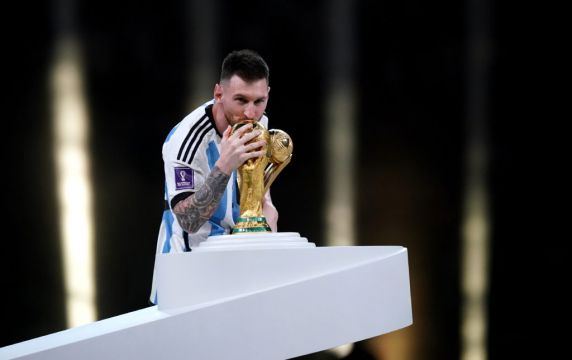The 2026 World Cup will feature 12 four-team groups and a last-32 knockout round for the first time.
The format for the 48-team tournament, to be co-hosted by the United States, Canada and Mexico, was approved at a meeting of the Fifa Council in Kigali, Rwanda on Tuesday.
The game’s global governing body ditched plans for 16 three-team groups, having acknowledged the “risk of collusion” in that format and also having been persuaded to stick with four-team groups after the drama that unfolded at the end of the group phase at the last World Cup in Qatar, which was the last tournament to feature 32 teams.
FIFA Council approves international match calendars
🗞️👉 https://t.co/KyrTVnrNxh pic.twitter.com/FIL05feiZT— FIFA Media (@fifamedia) March 14, 2023
Advertisement
Winners and runners-up in each of the 12 four-team groups will advance to a new round of 32, where they will be joined by the eight best third-placed teams. In all, the new format will involve 104 matches being played.
Chelsea and Real Madrid have secured places at Fifa's new-look, 32-team Club World Cup in 2025 after that competition’s access list was also approved by the Council.
Europe has 12 spots in the new tournament, with the first four going to the Champions League winners in each of the four years leading up to 2025. Chelsea were European champions in 2021, with Real victorious last year.
Europe’s other eight spots in the new Club World Cup will be awarded on a club ranking system over the four-year period leading into the finals.

Manchester City and Liverpool are currently second and third respectively in the UEFA club coefficient rankings, so could have a strong chance of qualifying.
However, the number of clubs per country will be capped at two, except where a country has more than two Champions League winners in the four-year period.
Fifa said it is also looking to maintain an annual club competition from 2024. This would involve the Champions League winners facing the team emerging from play-offs between continental champions from the other five confederations at a neutral venue.
The 2026 World Cup will have the same 56-day overall ‘footprint’ of rest, release and tournament days as the three most recent summer finals in 2010, 2014 and 2018, Fifa said.
However, the 2026 finals are expected to last 38 or 39 days, meaning a preparation time of around 14 days. The 2014 and 2018 finals lasted 32 days.

The Council also approved the new men’s and women’s international match calendars at the meeting.
The men’s calendar was fixed for the 2025 to 2030 period, with the major change being the introduction of a 16-day, four-match international window in late September and early October to replace the separate September and October windows which are currently in place.
The women’s international match calendar for 2024-25 features six windows as it does currently, with window types varying between the confederations.
The Council has also approved the establishment of a player welfare task force which will look at the implementation of mandatory, worldwide rest periods.
Fifa president Gianni Infantino said: “Our fundamental objective is to have clarity on this topic, and to have meaningful football matches while protecting the well-being of the players and recognising that many regions need more competitive football.”

Maheta Molango, the chief executive of the Professional Footballers’ Association, welcomed the announcement of a player welfare task force but expressed deep concerns regarding the plans for the 2026 World Cup.
“The football calendar needs a complete reset,” he said.
“The expanded World Cup format being announced for 2026 means that, yet again, more games are being forced into an already overcrowded schedule.
“It is right that Fifa have listened to players’ concerns and announced a working group to address the critical issues surrounding fixture congestion and player welfare.
“It is also encouraging to see that key concerns raised with Fifa by the PFA, such as the need for a minimum of 72 hours between games, a mandatory day off each week, and an annual rest period, are being prioritised.
“When Gianni Infantino came to Manchester to meet with us last year, these were the changes that our Premier League and WSL members said they wanted to see.
“However, it’s very difficult to see how that aligns with the constant expansion of the domestic and international calendar.
“We know that the current workload players face is having an ongoing impact on their wellbeing, both on and off the pitch. We can’t simply push them until they break.”







